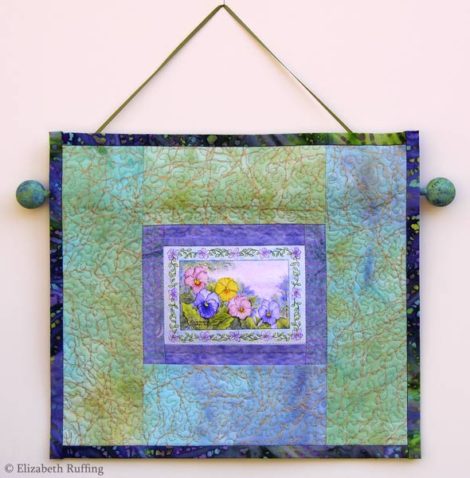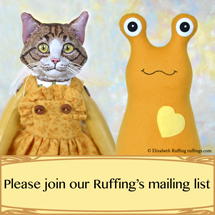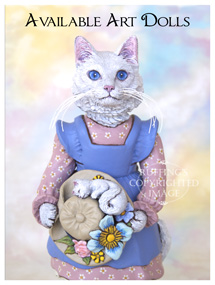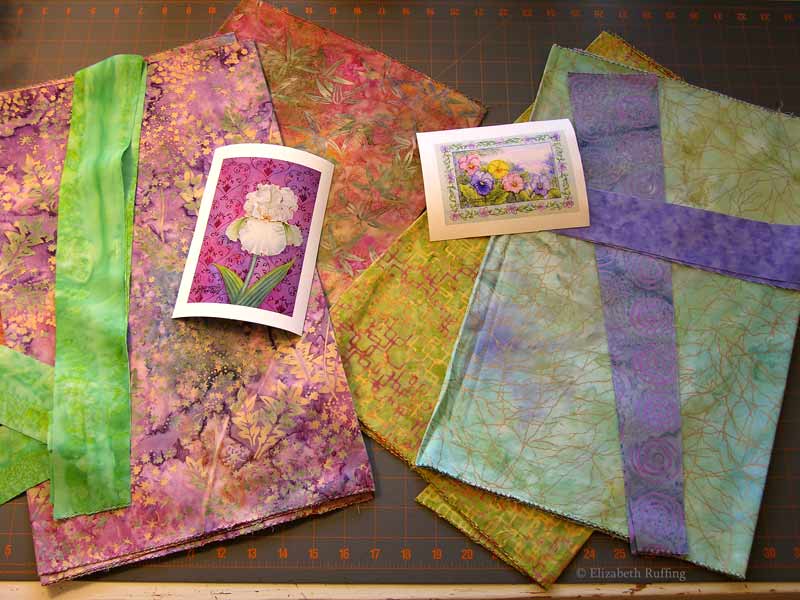
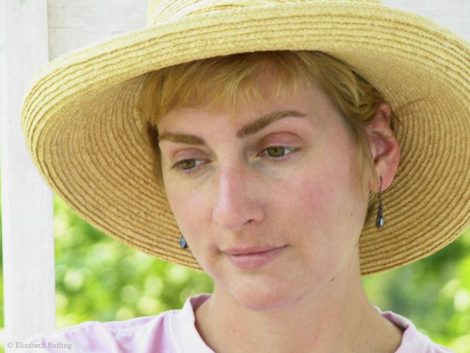 This me, Elizabeth, in my favorite straw sun hat. I wear it when we go out walking. I have other straw hats that I use for gardening or for working in the yard. I love flowers and I’m making two floral art quilts, incorporating my love of gardening, painting, and sewing. One is based on a watercolor painting I did of an iris flower.
This me, Elizabeth, in my favorite straw sun hat. I wear it when we go out walking. I have other straw hats that I use for gardening or for working in the yard. I love flowers and I’m making two floral art quilts, incorporating my love of gardening, painting, and sewing. One is based on a watercolor painting I did of an iris flower.
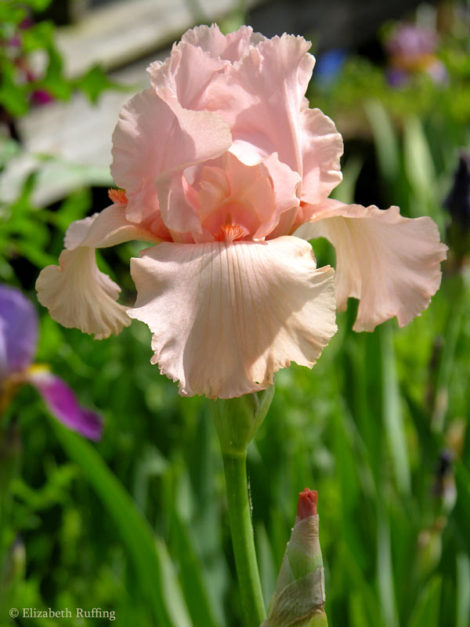 I brought many of my iris plants with me, when we moved from New York state to North Carolina. I kept them in containers on the balcony of our apartment, and then planted them behind our new house. Many of them are my grandma’s irises.
I brought many of my iris plants with me, when we moved from New York state to North Carolina. I kept them in containers on the balcony of our apartment, and then planted them behind our new house. Many of them are my grandma’s irises.
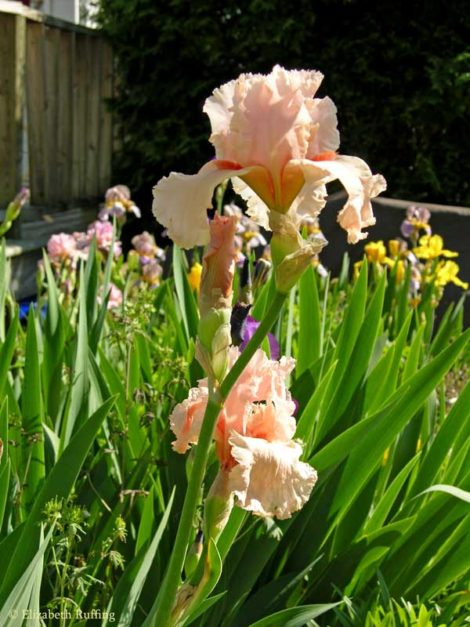 I painted one pink iris on an Art Nouveau inspired wallpaper background, which I designed.
I painted one pink iris on an Art Nouveau inspired wallpaper background, which I designed.
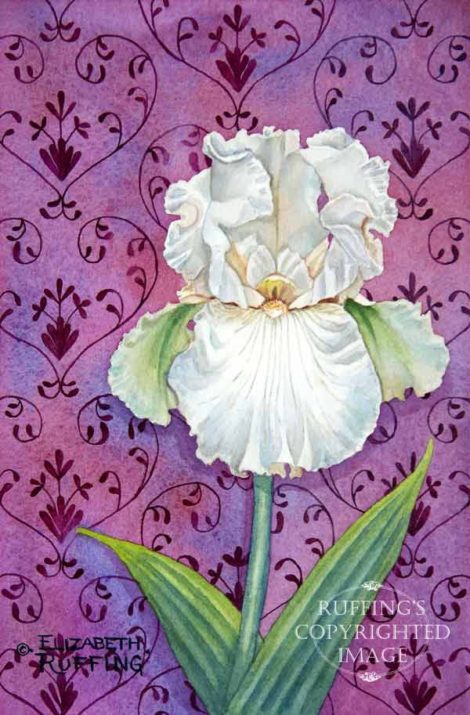 I printed this image on canvas that was made for use in our Epson printer. I sealed it with Liquitex matte varnish, because I am going to use this art quilt as a wall hanging.
I printed this image on canvas that was made for use in our Epson printer. I sealed it with Liquitex matte varnish, because I am going to use this art quilt as a wall hanging.
The second image I am using is printed from my watercolor painting of pansies. It has a light blue border, with decorative flowers.
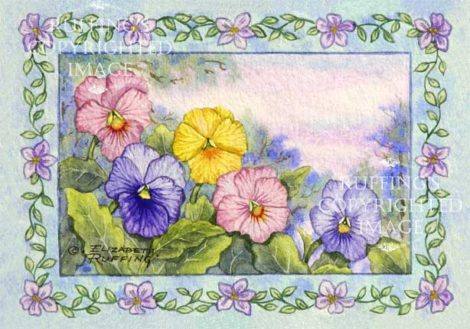 Pansies are so adorable and cheerful.
Pansies are so adorable and cheerful.
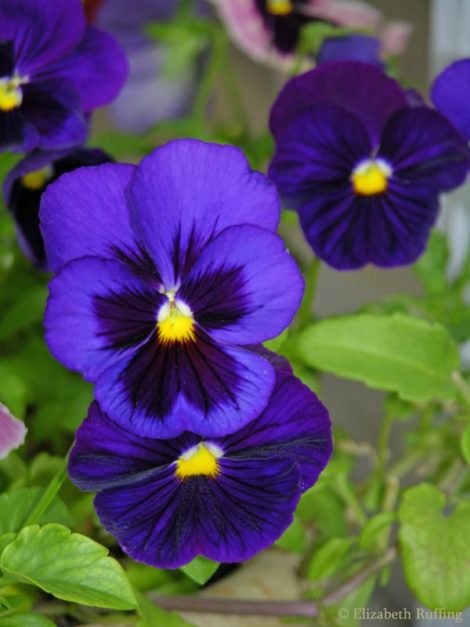 The come in such pretty colors, just like batik fabrics, which I am using to frame my canvas prints. I’m using an assortment of cotton batiks, which blend together nicely for quilts.
The come in such pretty colors, just like batik fabrics, which I am using to frame my canvas prints. I’m using an assortment of cotton batiks, which blend together nicely for quilts.
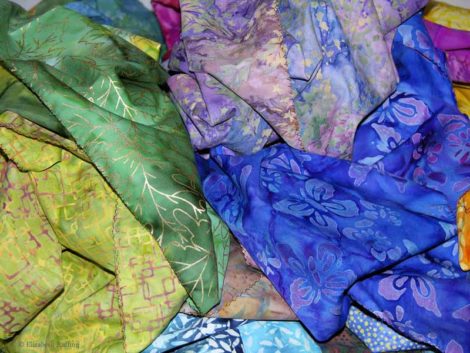 This is the pile of cotton batik fabrics, waiting to be pre-washed, before I sew them into a quilt. I sewed a zig-zag stitch along the raw edges, to keep them from fraying in the washing machine. I like to wash my fabrics before I use them, to compensate for shrinkage, and because I find the smell of fabric sizing irritating.
This is the pile of cotton batik fabrics, waiting to be pre-washed, before I sew them into a quilt. I sewed a zig-zag stitch along the raw edges, to keep them from fraying in the washing machine. I like to wash my fabrics before I use them, to compensate for shrinkage, and because I find the smell of fabric sizing irritating.
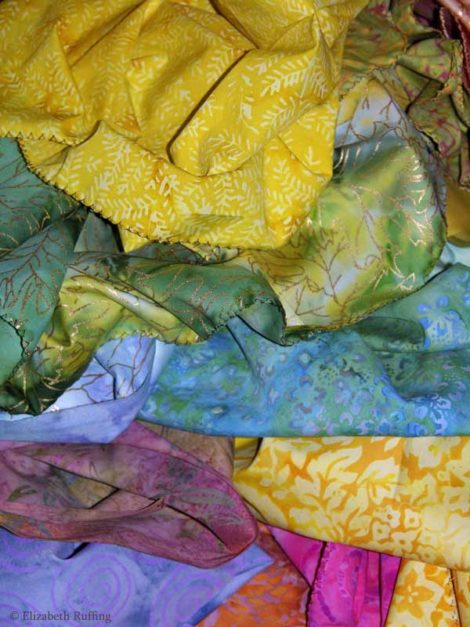 I love fabric. I get excited about anything that is displayed in those rainbow, full-spectrum arrangements in the store. I lose track of time on the paint aisle of an art store, or a in a quilt shop, with the fabric bolts, lined up by color. I’m captivated by colorful things.
I love fabric. I get excited about anything that is displayed in those rainbow, full-spectrum arrangements in the store. I lose track of time on the paint aisle of an art store, or a in a quilt shop, with the fabric bolts, lined up by color. I’m captivated by colorful things.
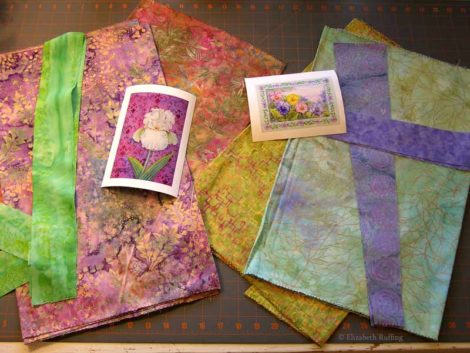
I’m using the batiks in strips around my canvas prints, like a mat and a frame, only made of fabric. Once sewn together, I am putting cotton batting behind them, and then a cotton fabric as a backing.
I drop the feed dogs on my sewing machine, so I can free-motion quilt the layers together, randomly winding around, to make a stippling effect.
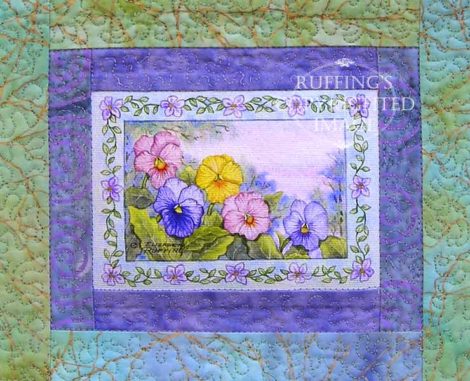
Once the layers are sewn together, I am adding a sleeve to the back of each quilt. I finish the edges of the sleeves, fold them in half lengthwise, and the attach them to the top edge of each quilt, on the backs of the quilts. I hand stitch the lower edge of each sleeve to the back of the quilt. Then I add binding to the edges of the quilts, avoiding the openings of the sleeves.
I am taking a wooden dowel, cutting it to the lengths I want for each quilt, and gluing wooden balls to each end, to make a display rod for each quilt. The wooden balls come in a package at Michael’s or another craft store, and they have holes drilled in one side, big enough to insert the end of a dowel. Just be sure to get the right size dowel for the hole.
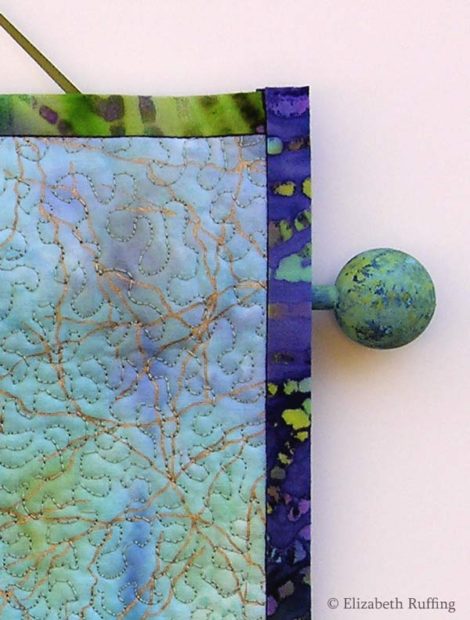
I am using coordinating acrylic paints, and a sponge to paint the rods to match my quilts. I varnish them, and when they were dry, I insert them in the sleeves. I tie a ribbon to each display rod, to hang them up.
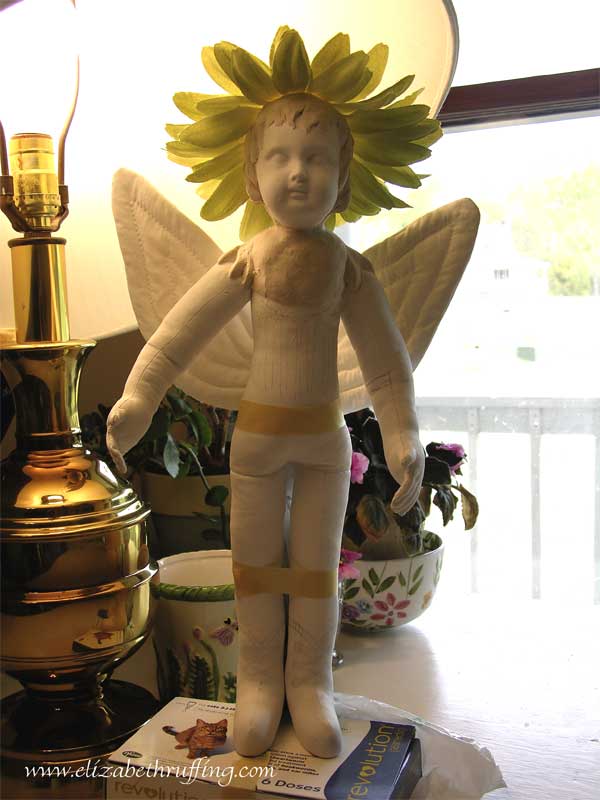 I am getting my hands dirty now…
I am getting my hands dirty now…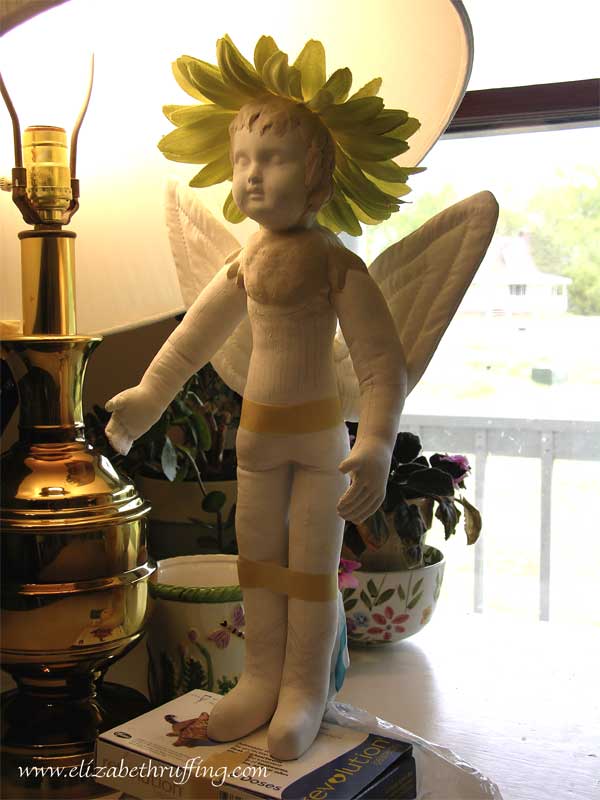 I also relieved myself of the Plastic Wood, which is now in the trash. No offense to DAP…I’m sure it’s great if you mind the warnings not to get it on your skin. Mea culpa.
I also relieved myself of the Plastic Wood, which is now in the trash. No offense to DAP…I’m sure it’s great if you mind the warnings not to get it on your skin. Mea culpa.











